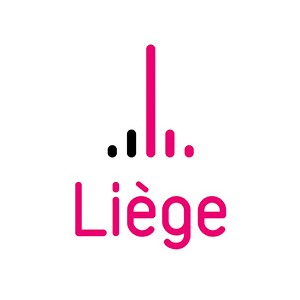OVALERIUS DE SAEDELEER
A SNOWSCAPE BY VALERIUS DE SAEDELEER

Valerius De Saedeleer (Aalst, 1867 - Leupegem, 1941) Snowy landscape, 1939 Oil on canvas - 85 x 95 cm Inv. BA.AMC.05b.1960.21700 Donation Fernande Pisart to the City of Liege in 1960
As a teenager, Valerius already wanted to devote himself to art. But his father wanted a different career for his son, so he had to train and work in a textile company in Ghent. It was not long before Valerius left the factory. Without his father's consent, he enrolled at the Academy of Fine Arts in Ghent, where his fellow student was Georges Minne (1866 - 1941), a future sculptor, draughtsman and engraver.
From 1885 to 1889, he moved to Brussels, where he studied under the landscape painter Franz Courtens (1854 - 1943). Courtens had a great influence on the young artist, who started out in the wake of Impressionism.
In 1892, Valerius De Saedeleer met Albijn Van den Abeele (1835 - 1918), a great landscape painter and municipal secretary in Afsnee and Sint-Martens-Latem, on several occasions. A year later, the De Saedeleer family moved to Laethem, before moving to Ghent and then to Lissewege.
In 1898, Valerius returned to Sint-Martens-Latem, encouraged by Albijn Van den Abeele. The same year also saw the arrival of his faithful friend from the Ghent Academy, Georges Minne. However, while Georges Minne could already look back on a successful artistic career when he arrived at Sint-Martens-Latem, Valerius De Saedeleer had not yet produced any outstanding works.
The brothers Karel and Gustave Van de Woestijne also moved to Laethem in 1899. It was through contact with Gustave and the influence of Pieter Brueghel the Elder that De Saedeleer turned to a more restrained type of landscape, often with a low horizon line, in a timeless and unreal atmosphere, sensitised by the light. From 1904 onwards, his works, which were also influenced by Franz Courtens and Emile Claus, gave way to a series of works with a synthetic and refined vision.
In 1908 De Saedeleer moved to Tiegem, where Gustave Van de Woestijne joined him in 1913. De Saedeleer painted snowy landscapes there. Gradually the horizon line rises, leaving more room for the undulations of the landscape. De Saedeleer spent the war years in Wales, from 1914 to 1919. Between 1921 and 1941 he settled in Etikhove and then in Leupegem, where he died in 1941.
In this Snowy Landscape from 1939, the horizon line divides the space into two equally proportioned areas. The large dark sky becomes lighter as one descends towards the immense strip of land; the hedges delimit the undulating spaces in which the shades of white and grey are played out. The static horizontality of the composition is broken by the verticality of the trees, which enliven the space somewhat. The human presence appears only anecdotally, in the form of thatched cottages that one imagines to be inhabited.
This work is the expression, not of nature itself, but of what one feels in contact with it. The synthesis of its elements gives it a feeling of spatial serenity.
THE SCHOOL OF LAETHEM-SAINT-MARTIN
The term 'Sint-Martens-Latem School', to which De Saedeleer is generally attached, is the most widespread but also the most contested. Although artists came together in this small village on the banks of the Leie with their own style, there was no desire to create a common style. It was only a question of coexistence and emulation between artists, for whom the peaceful countryside south of Ghent was one of the most frequent sources of inspiration.
Among the great figures who stayed at St. Martin's Laethem are Emile Claus, the brothers Xavier and Caesar De Cock, George Minne, Valerius De Saedeleer, Gustave and Karel van de Woestijne, Albijn Van den Abeele, Albert Servaes, Constant Permeke, Frits Van den Berghe, Gustave and Léon De Smet, Hubert Malfait, Albert Saverys, Jules De Sutter, Evarist de Buck, Maurice Schelck and Albert Claeys. Many of these artists are in the collections of the Liège Museum of Fine Arts.
Christophe Remacle
Conservator - Conservator-Museums of the City of Liege



